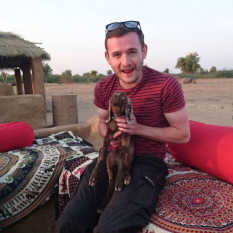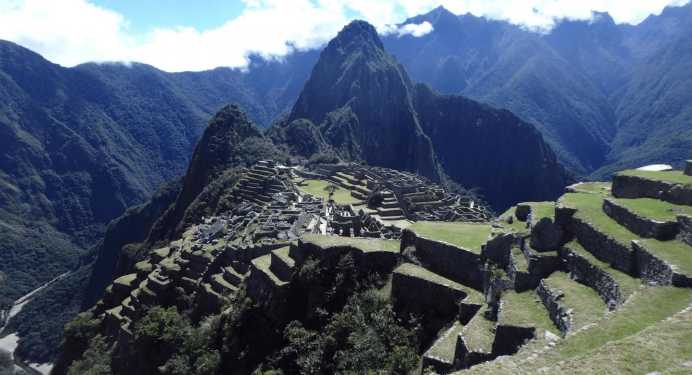
4-day / 3 night Inca Trail Hike
The Inca trail trek to Machu Picchu
Celebrated as Peru’s most famous hike, and one of the world’s most iconic trekking experiences, the Inca trail trek to Machu Picchu provides an awesome combination of sub-tropical Andean mountain environments, including cloud forest, alpine tundra and jungle, with an impressive array of Inca archaeological sites.
The original and most popular trek to Machu Picchu is the 4 day/3 night Inca Trail, which traverses the original Inca steps ending at the Sun Gate - Inti Punku - the entrance to Machu Picchu city. The 4 day trek covers a distance of 26 miles (marathon distance), of which the highest - and most dreaded - point rises to just short of 13,900ft, where heart pounding and shortness of breath become the norm, responding to the lack of oxygen in the air.
We signed up to trek the Inca Trail with Llama Path, a sustainable tourism operator who put the porters' welfare issues at the forefront of their business philosophy.
Inca Trail Group Service
Day -2: The Lull before the Storm
Llama Path recommended that we spend 3 days at altitude before undertaking the trail (we only took 2 days), allowing our bodies to acclimatise to the altitude and reducing the risk of developing the symptoms of acute mountain sickness - headaches, extreme tiredness, loss of appetite, and nausea. This gave us plenty of time to discover the city of Cusco (Spanish: Cuzco), and the nearby Inca ruins of Sacsayhuamán (the greatest and nearest to Cusco of the Inca ruins), Puca Pucara (Red Fort), Q'enko, Tambomachay (Inca Baths), as well as spending a day at the Sacred Valley of the Incas to visit the ruins at Ollantaytambo.
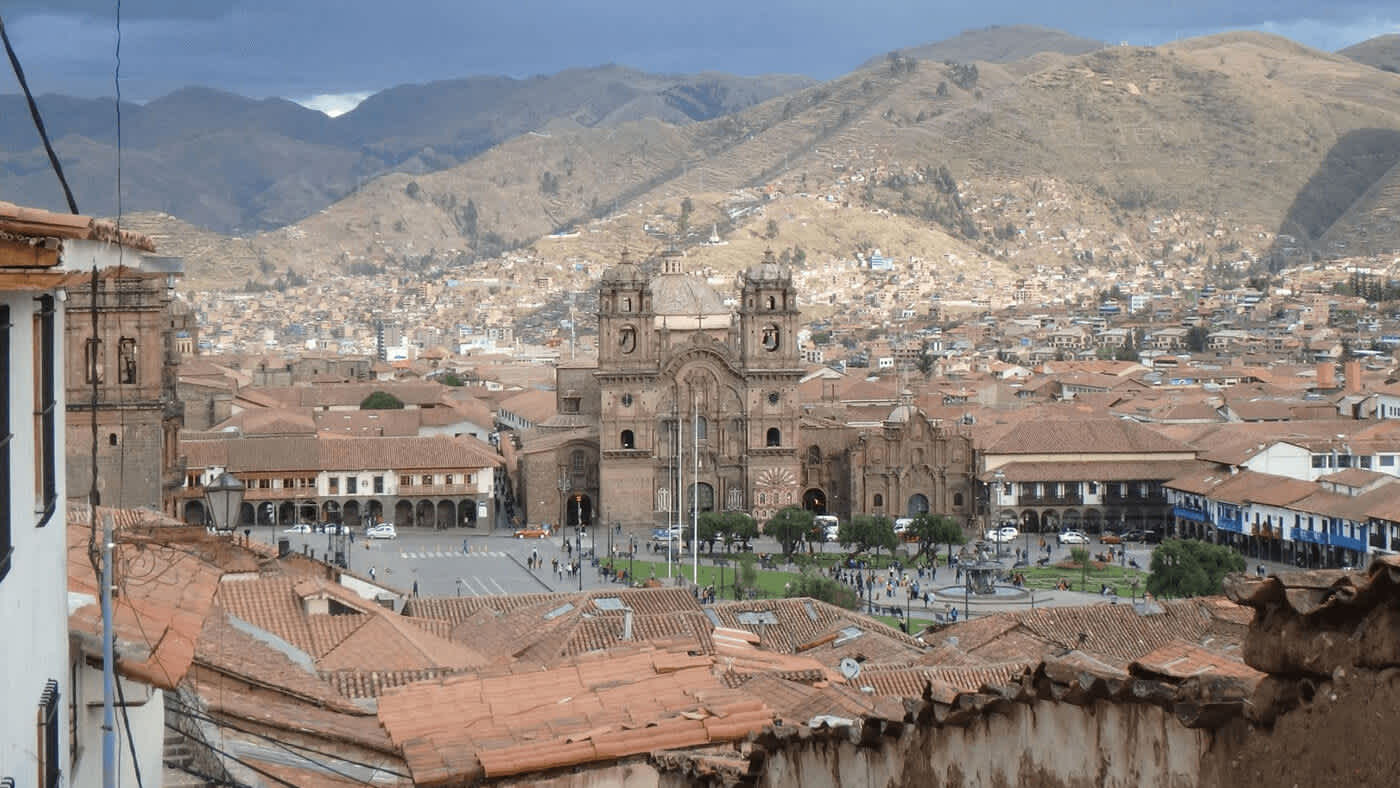
Some tour companies will require you to undertake a safety briefing in the days before the tour, and take payment off any final fees (no money, no honey). Use this time wisely to meet your guide and ask any questions, or highlight any concerns you may have. If required, this is a good opportunity to hire any additional equipment you may need or have forgotten - a sleeping bag, walking sticks, extra porters', etc. You may feel that you are being up-sold equipment, but having now undertaken the trek we believe walking sticks are a great assistant in both steep up and down ascents.
Day -1: The Ultimate Day
Whilst it's difficult with the endless offers on Pisco Sours 'Buy 1 get 3 FREE!', try as strong as your will might to avoid alcohol before undertaking your trek - albeit within reason, life is short and the quality of the Pisco's at source are excellent. More to our surprise, the quality of some of the wines available in the regional restaurants was incredible and attractively priced.
Day 1: Cusco - Km82 to Ayapata
The first morning of the trek was a painfully early start, and the last opportunity to shower for what would be four days. With butterflies in our stomachs, we were picked up by our tour guide and transferred to Llama Paths porters' house - a purpose built building offering the porters' a home between treks, with many of the porters' having come to do the job from very far away communities up in the Andes.
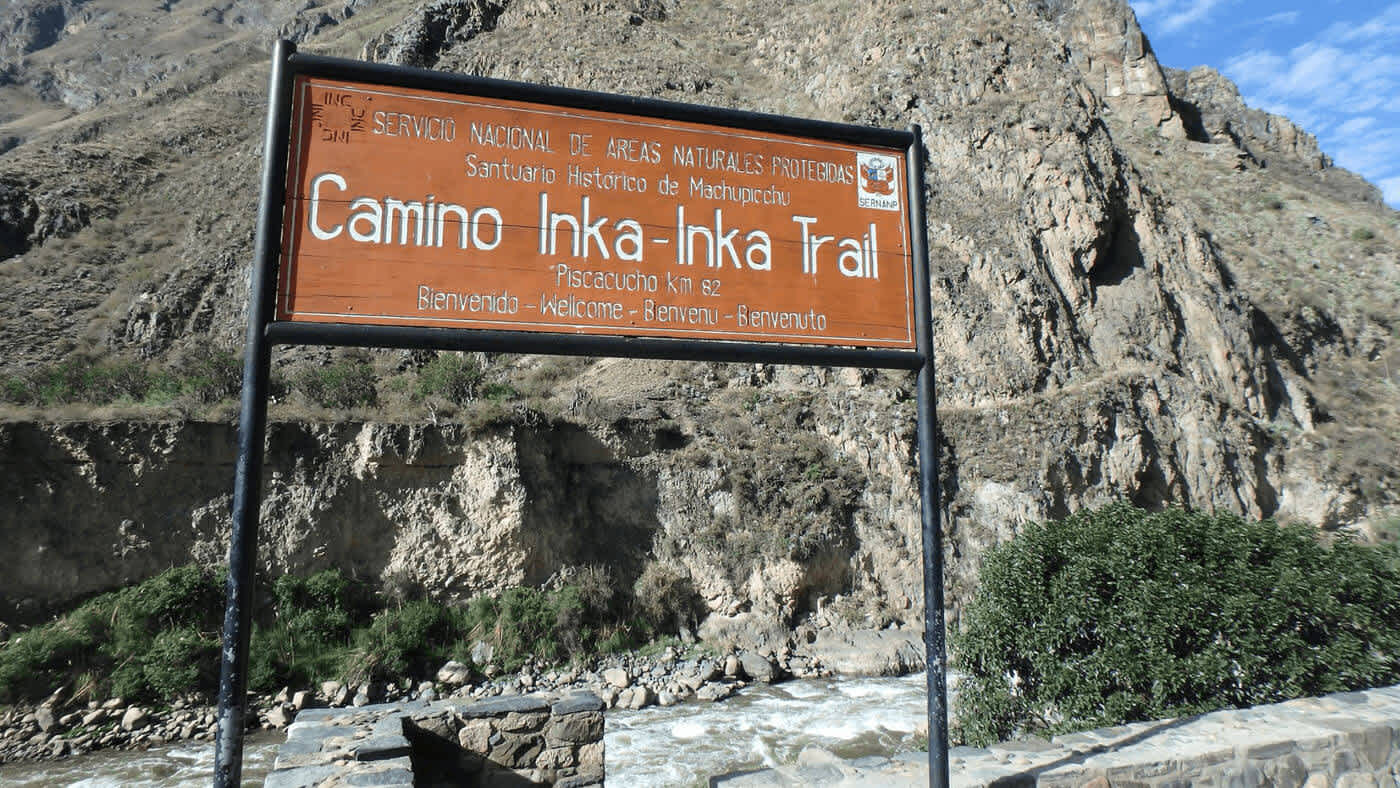
With our mini bus now stocked with equipment, food, and more importantly our porters' to be for the next 4 days, we continued our journey to the trailhead at Kilometre 82, and our first checkpoint. When our eyes were awake enough to fathom, the journey offered incredible views as the sun rose over the Andean highlands and into the valley of Urabamba.
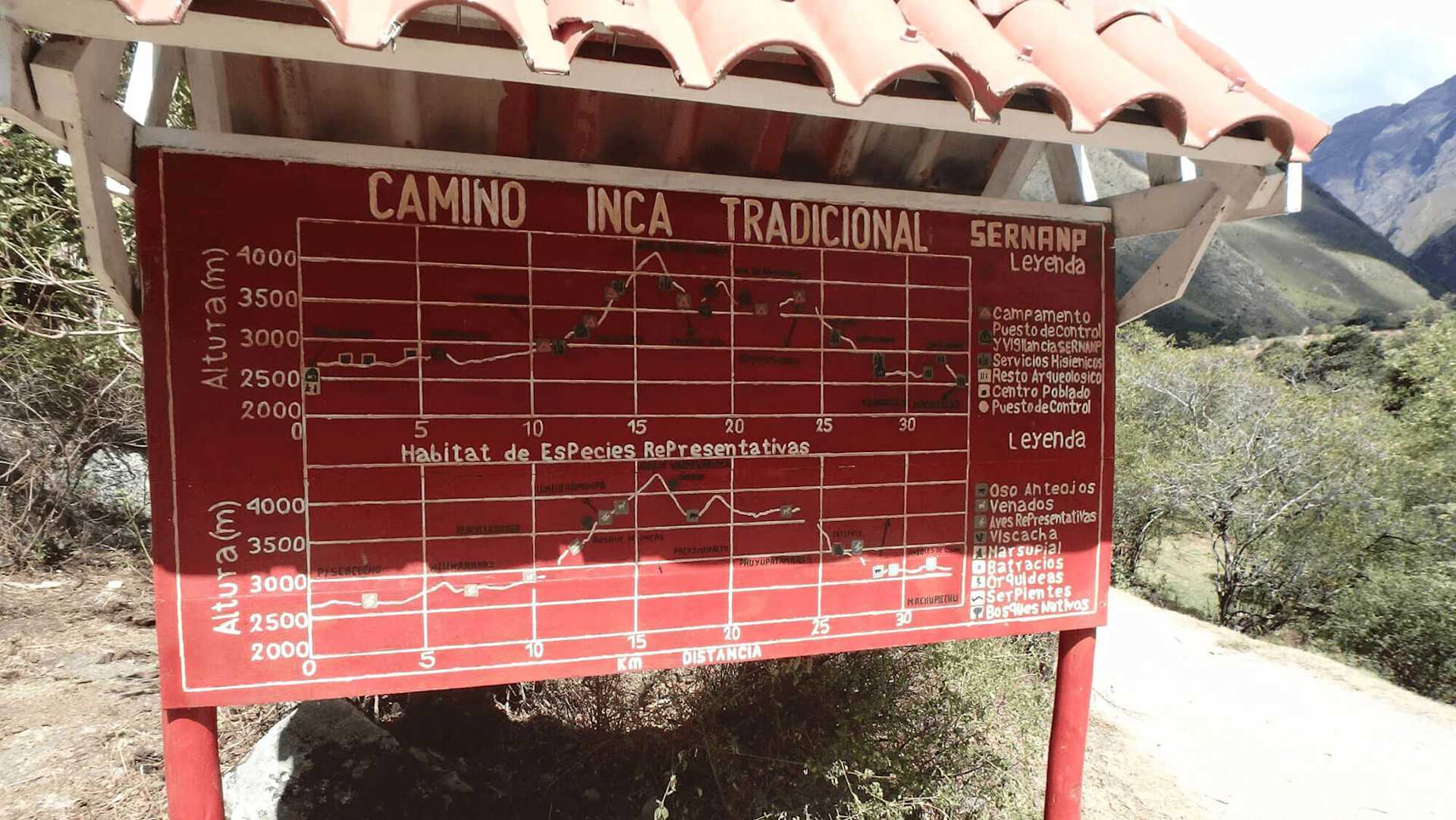
The first day of the Inca Trail is easy going - described as the "Inca Flat" (gentle ascents and descents) - starting alongside the Urubama River and climbing gently up the Cusichaca Valley, meandering through trees and a variety of native plant life - helping you settle comfortably, and over confidently into the trek.
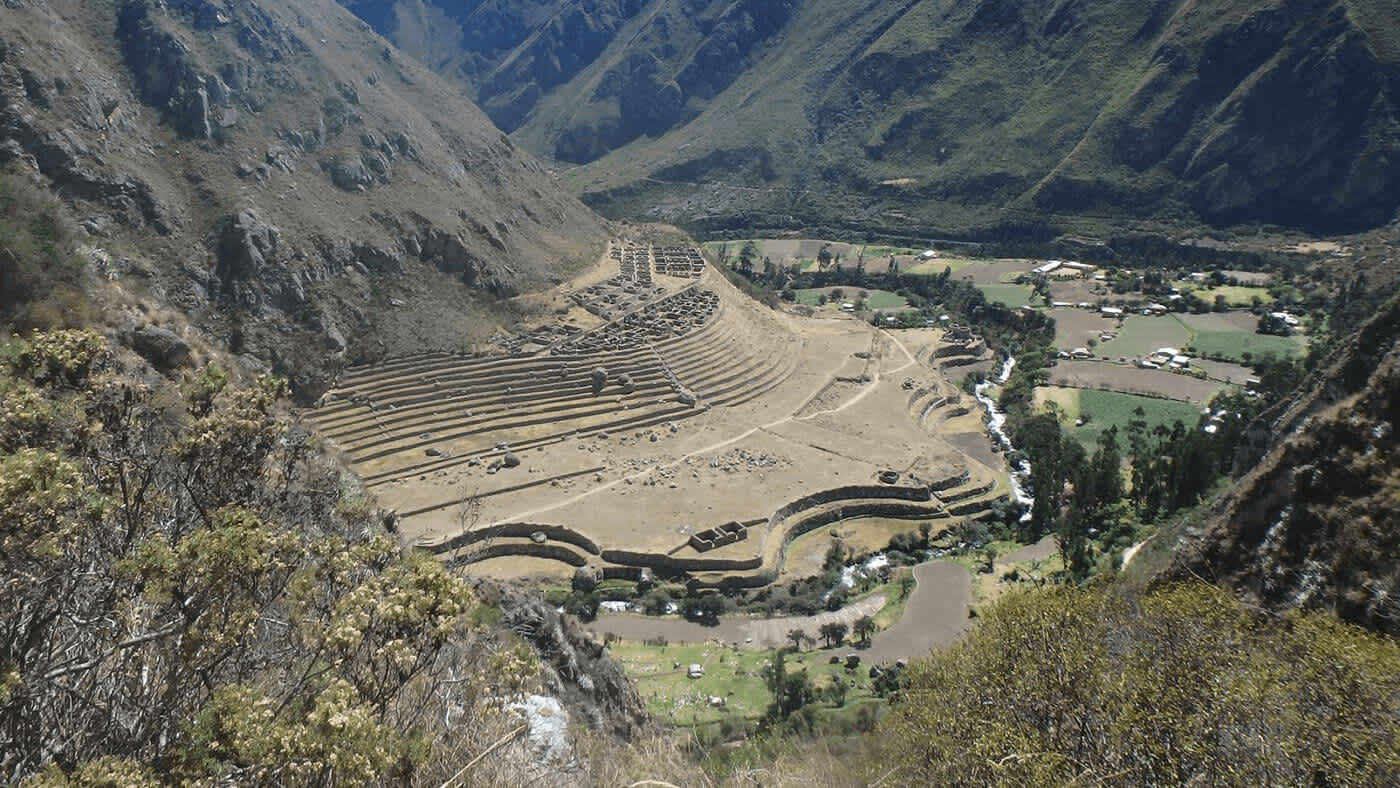
Climbing further we are rewarded with views of our first Inca site of Llactapata.
As we arrive at our campsite for the night, Ayapata (3300m / 10829ft), all tents had already been erected, and awaiting us in the kitchen tent our chef had prepared what was quickly to become the best time of our day 'happy hour' - with offerings of freshly popped corn, tea and a hot malt drink of 'Milo'. This provided entertainment enough whilst our chef cooked up a hearty three course meal in the same tent, behind a simple curtain. That night we enjoyed some of the best food we had eaten since being in South America - half way up a mountain.
Day 2: Ayapata to Chaquicocha
Waking to the hustle and bustle of the porters' preparing for the day ahead (<6am), we were greeted at our tent door with a bowl of hot water and soap, along with a fresh coca tea. Over breakfast - quickly realising we were likely to gain weight on this trek - we were told to expect a much harder day than yesterday, with two high passes and nearly 16km of walking.
Today the biggest challenge of our trek awaits, the infamous Dead Woman's Pass (4200m / 13779ft) - the highest point of the Inca trail.
For the first time it felt cold as we set out on the day's hike - under the canopy of the trees we received no direct sun light, and gloves/hat's were essential. However as soon as we climbed above the tree line we were once again stripping down to our t-shirts under the morning sun - we were also rewarded with 360 degree views of the stunning mountains and valleys.
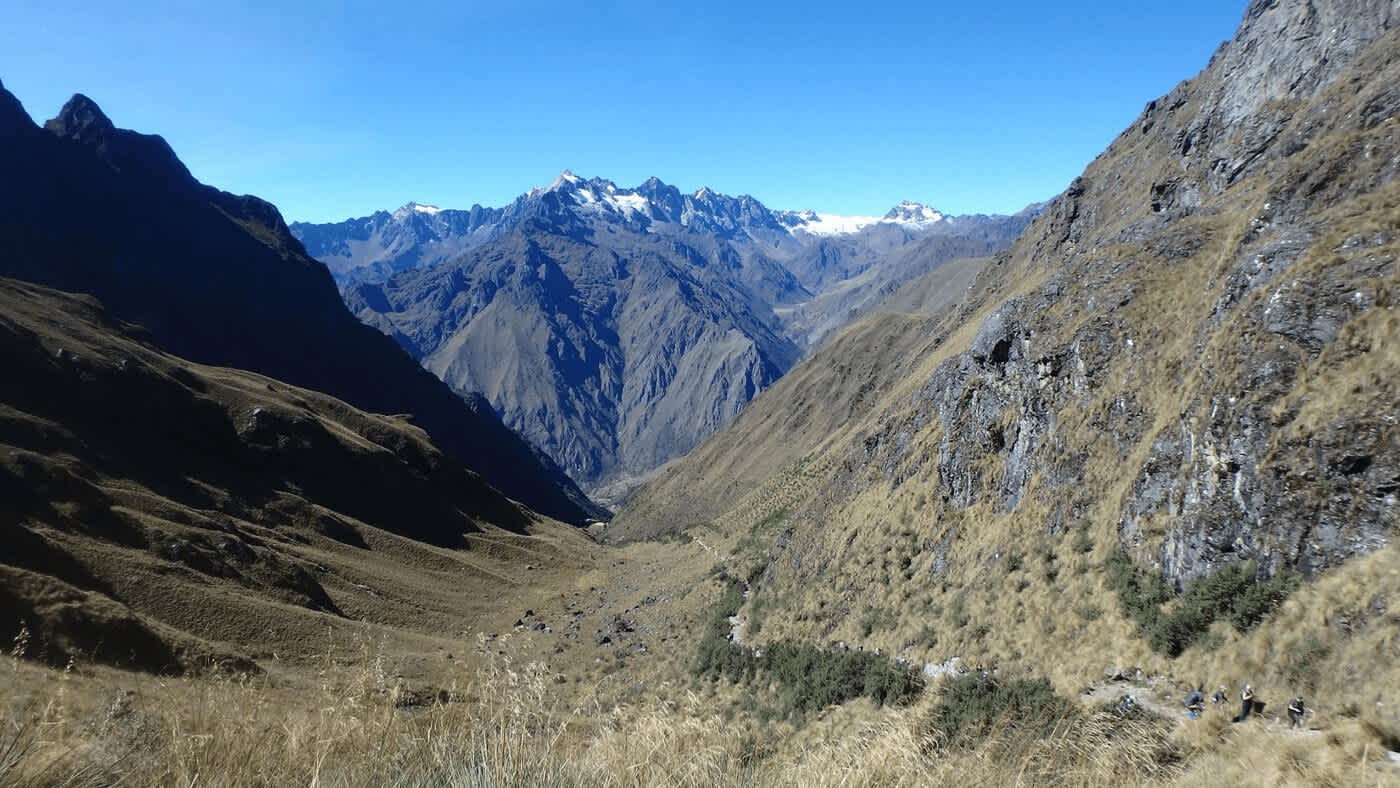
The climb to Dead Woman's Pass was unrelenting - the ancient Inca stone steps roughly laid made for slower progress than normal, stopping ever more often to catch our breath. We parting with our guide and agreed to wait for him at the top - he appeared to be slowing down more than us, and there was really only one way to go, so he knew we wouldn't get lost.
Punishing our walking poles with our full weight, we panted our way up and up and up, and up further. It took a long time, but we finally made it to Dead Woman’s Pass.
Reaching the peak we sensed a great deal of achievement and celebrated by admiring the majesty of the highest point of the Inca trail. The hardest part of the trail was now behind us, we had accomplished what was deemed the hardest part of this physical feat. Yet, what goes up must come down. The decent was just as punishing, this time on the knees, and yet we still had another peak to pass today.
During the day we had the opportunity to visit two Inca sites, Runcuraccay and Sayacmarca. Runcuraccay - a round stone structure from which offers great views of the Aobamba Valley - was stood just before the second pass and served as a welcome resting point, and Sayacmarca following, 25 minutes from our camping site for the evening. In it's dramatic setting, steep stone steps lead up to the well-preserved ruins of Sayacmarca, the biggest we had seen so far. We were fortunate to have had these ruins all to ourselves, literally hanging off the side of the mountain up in the clouds.
Our campsite for the evening was Chaquicocha (3600m / 11800ft) which like Ayapata affords beautiful views of the sunsetting over the mountains in the distance. We slept veeeery well this evening.
Day 3: Chaquicocha to Winay Wayna
Day three, we woke feeling well acclimatised and fully immersed in our trekking experience - the grotty toilets and lack of shower no longer an issue. Having made it over the 2 passes yesterday we were now being treated to a relaxing day through some of the most beautiful scenery the Inca trail had to offer.
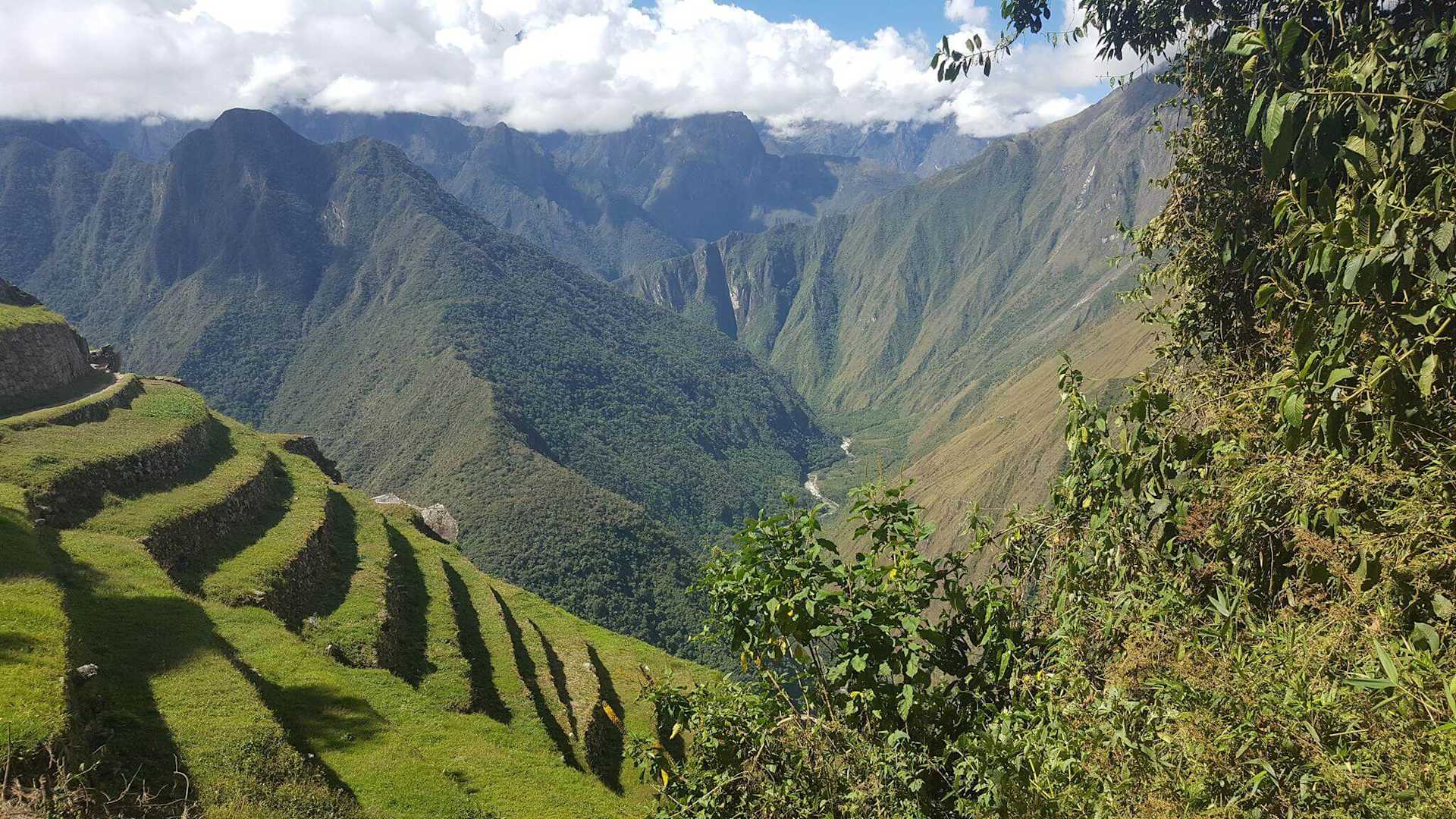
This part of the trail is particularly beautiful, surrounded by the lush and verdant cloud forest and spectacular views of the Andes in the distance. After our third and final pass of Phuyupatamarca, it's all downhill - around 3000 steps down - heading into the rain forest and leading to the terraces of Intipata. One of the highlights of the trail ruins, the ruins of Intipata are beautiful, consisting of countless terraces banked steeply above one another. The amazing mountain setting offered amazing views, and our first glimpse of the river Urubamba since day one on the trek.
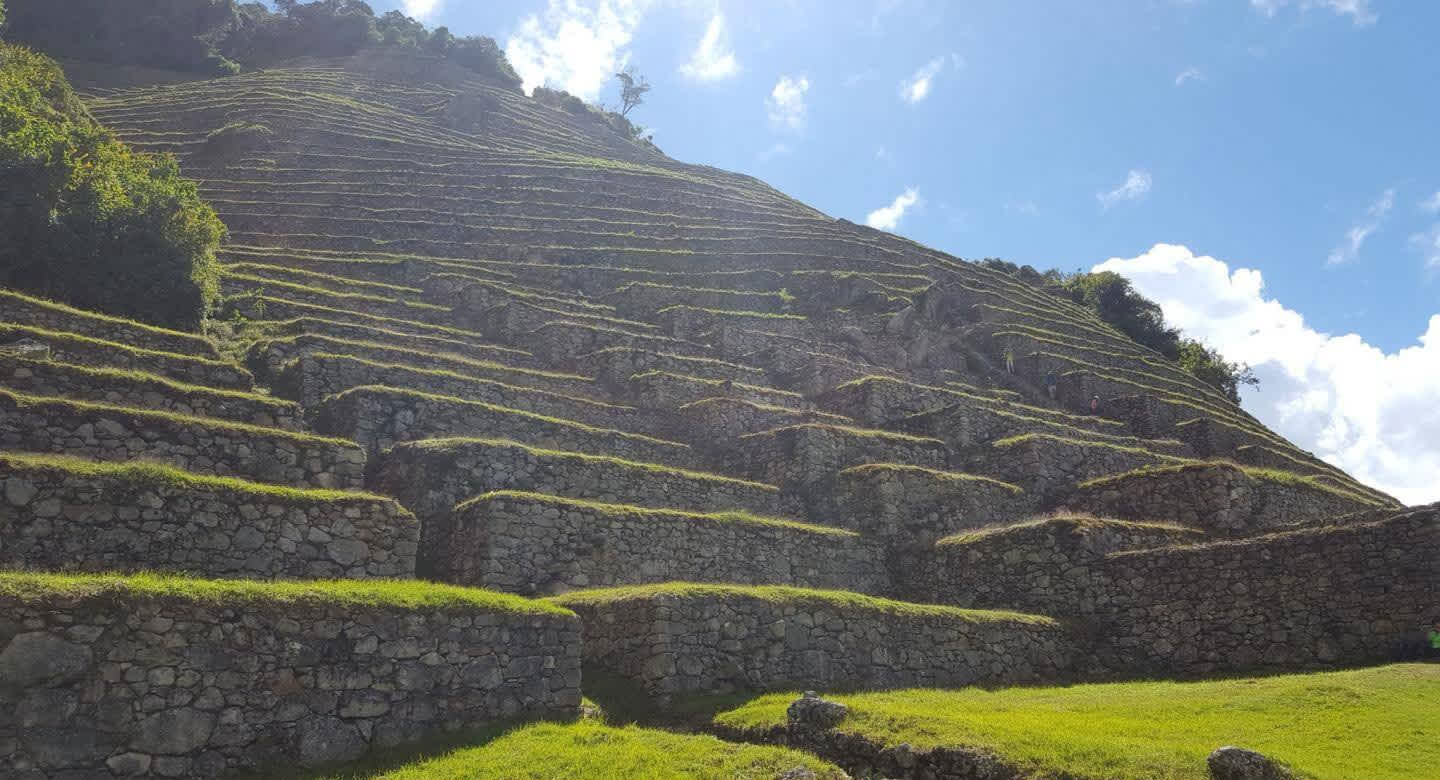
Todays trek was much shorter, and we ended our day early afternoon just as Machu Picchu mountain appeared through the distant haze. Our campsite for the final night was to be at Wiñay Wayna (2680m / 8792ft) - the busiest of all the campsites we had the pleasure of camping. Nearby are the ruins of Wiñay Wayna, which considering there proximity to the campsite are once again surprisingly quiet. Arriving early in the day gave us ample time for an extended tour of the largest archeological site, and the most impressive yet along the trail - just like explorers of old with no other tourists to spoil the occasion, tomorrow was to be a sharp contrast.

This was to be our last night with the porters' and the evenings meal was extra special. This was their last chance to pry any tips from our wallets.
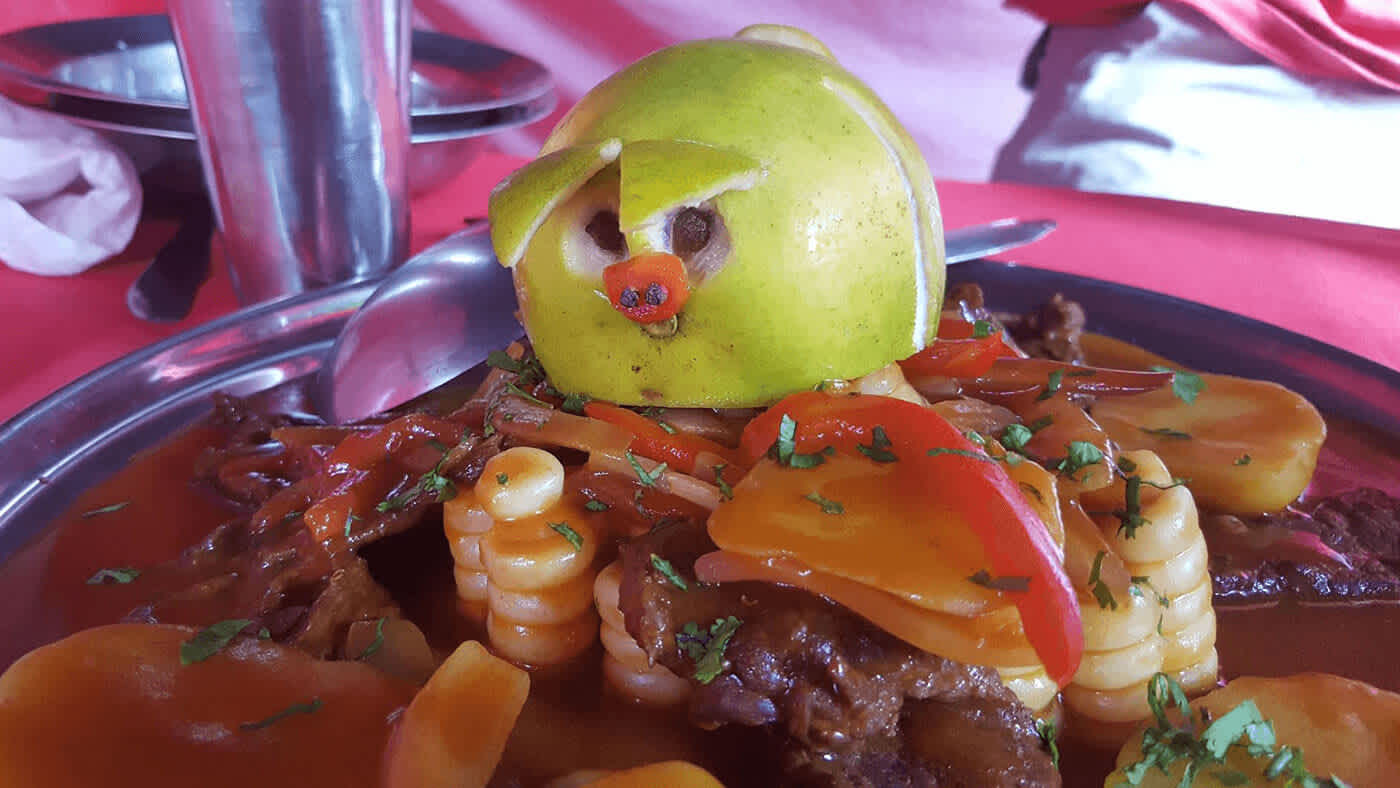
Filled with the excitement of getting to Machu Picchu the next day, we were in bed earlier than normal in anticipation for the very early start of day 4.
Day 4: Winay Wayna to Machu Picchu
Today is the long awaited highlight of the trek. Waking up just before 3.30am, we headed straight to the control checkpoint to enter Machu Picchu. Queues quickly formed, everyone overly giddy trying to hold back their excitement for what lay ahead. Once the site opened our final march was upon us, a fairly easy trek for around one hour to the Sun Gate, the principle entrance to Machu Picchu from the Inca Trail.

Upon reaching the Sun Gate there was still mist draped over the mountains - however this only added to the atmosphere as we gained our first fantastic views of Machu Picchu and it's surrounding peaks - there really is no sight as breathtaking, it's mysterious and magnificent - and even more so after three days of trekking.
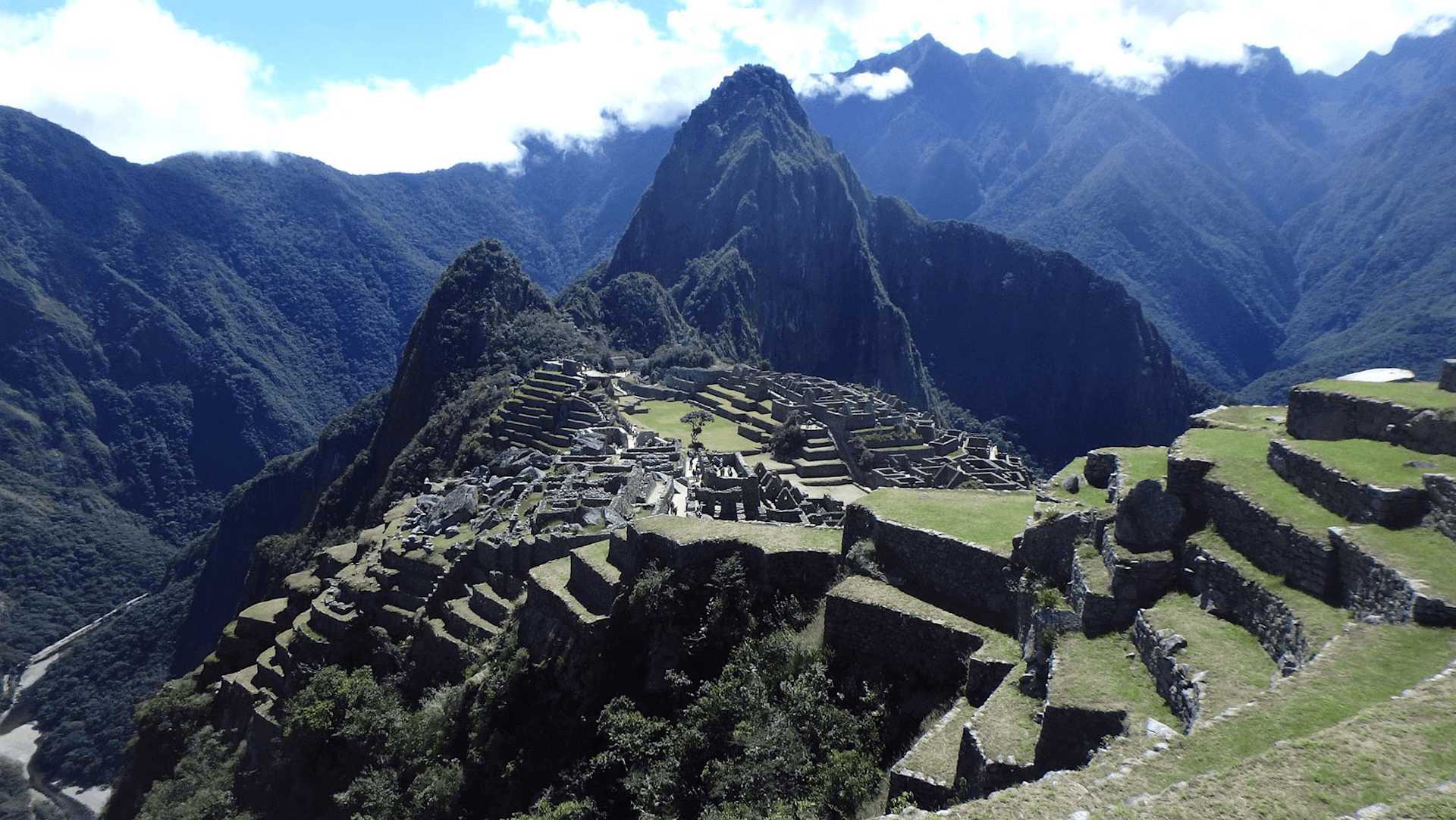
Thirty minutes further walking we arrived at the southern agricultural zone of Machu Picchu city, the location where the most famous photo's of the site are taken. During which time the mist had continued to lift revealing the most beautiful of views. It is difficult to find a physically quiet place within Machu Picchu with so many people jostling and shoving to get their tinder profile picture, yet it is easy to lose yourself in the enormity of ruin, terrace upon terrace, leaving you spellbound and constantly in awe.

We passed through Machu Picchu to the gates where we used the only available toilets on site, before re-entering for a better in depth look.
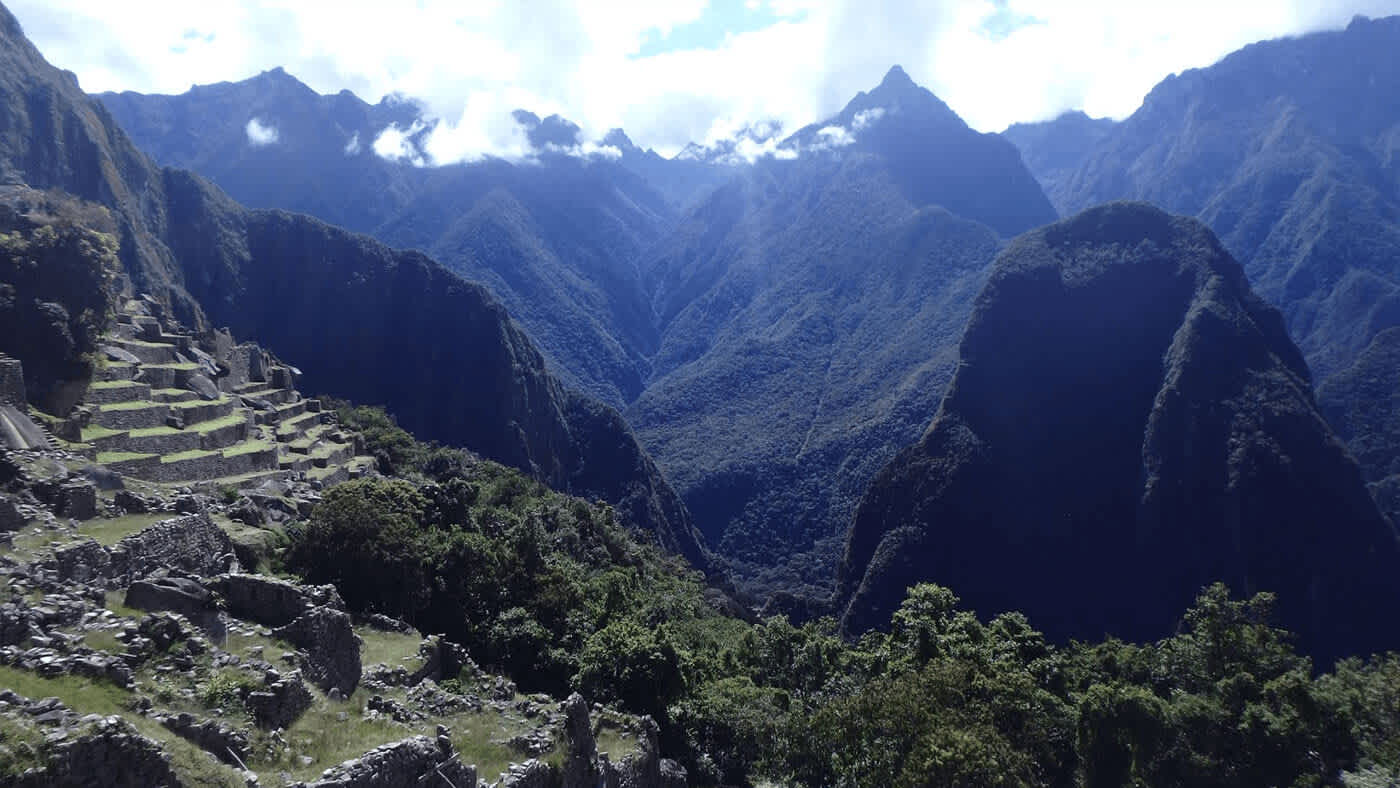
We left the sacred site much later - not before getting a stamp on our passport - and took the train back to Ollantaytambo from where we were transferred by bus back to Cusco. Our journey was to continue around Peru by night bus (and another day/night with no shower) to Puno, and the shore of Lake Titicaca.
Exhausted Satisfaction
Llama Path were instrumental in making our adventure absolutely perfect, from the pre trek communication, to the pre trek safety meeting in Cusco, and through-out the trek. Our guide Dario was attentive, encouraging, and very knowledgable of the trail and the archaeological sites enroute, whilst also offering our party (of two) the opportunity to venture at our own pace - which was somewhat faster than Dario was used too. Dario was both perplexed and intrigued by the contrast between our lifes - he living in Cusco at the time, and we both in London - which made for some interesting and comical conversations during dinner.
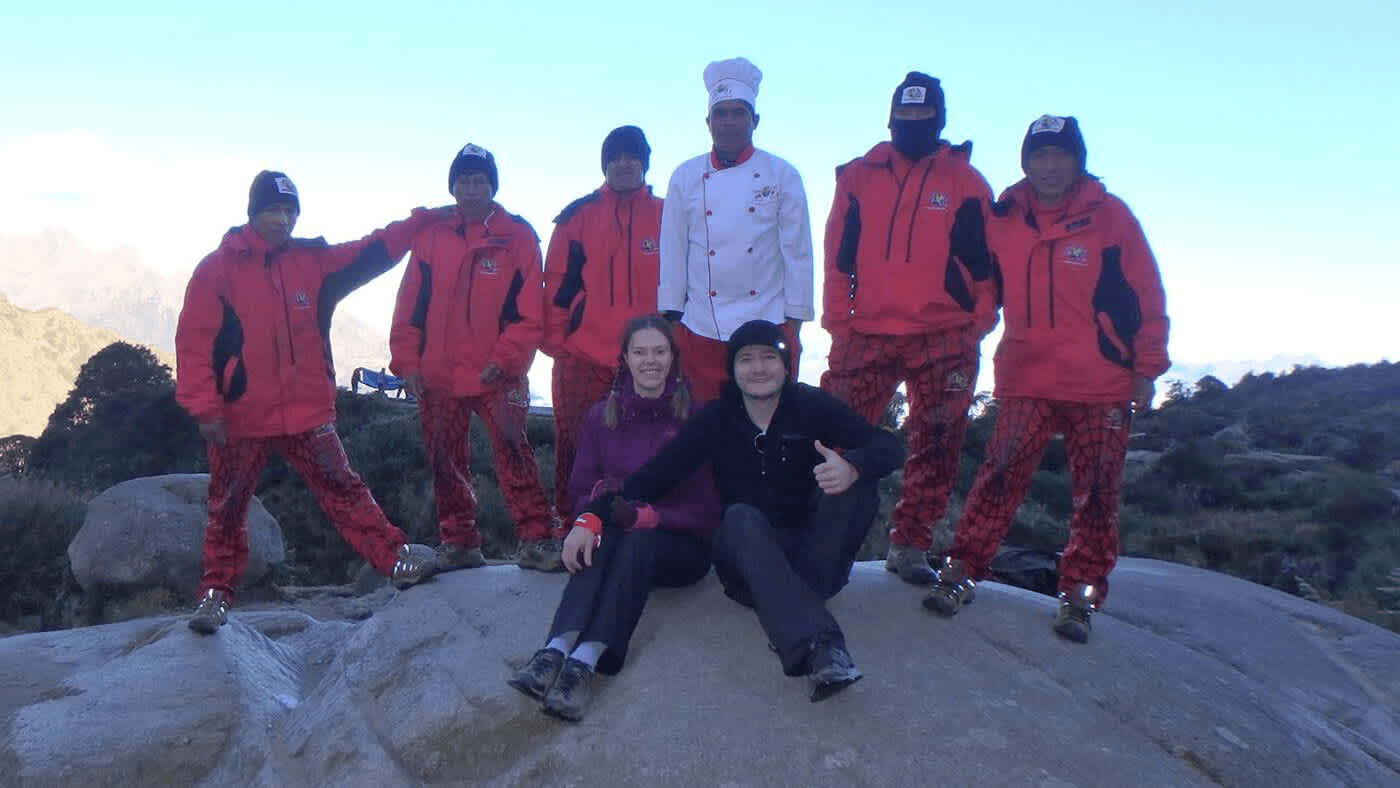
The porters' and chefs were also amazing - we continue to be baffled by there demeanour as each day they bounced along the trail at speed, always a smile on their faces (and a 20kg bag on their backs), and without falter continued to set up our camp and still having the energy to create and serve some culinary masterpieces. You will be expected to tip your porters' and guide, but compared to any waiter i've ever experienced in the past they have gone above and beyond to earn every dollar.
The highlight of the trek, Machu Picchu (A UNESCO world heritage site) is the undisputed king of tourism in South America, it was every bit as amazing and fascinating as you hear about - a sort of a rite of passage, to say you have been to that part of the world. It is important to plan your trek before you travel as the trail requires a permit and is limited to the number of people that are allowed to trek per day - you don't want to miss out, and you won't be disappointed!
- Starting Altitude: 2720m / 8920ft.
- Highest Altitude: 4217m / 13,780ft.
- Walking Distance: 45km / 26 miles.
- Longest Day: Day 2, approximately 16km / 9.9 miles
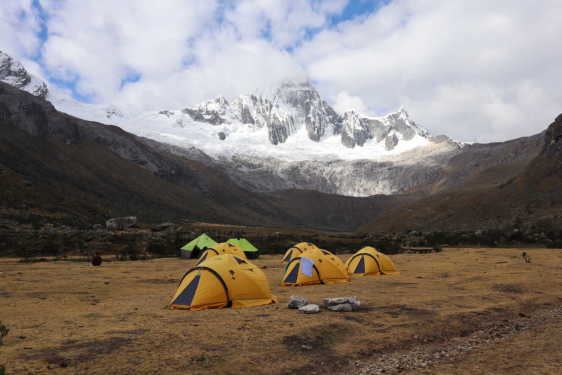
Incredible views, challenging hikes, and unforgettable experiences
Four Day’s Trekking the Cordillera Blanca
Alistair is a passionate traveler who has explored a diverse array of cultures and countries, having visited over 50 destinations across multiple continents.
Currently in: London, United Kingdom — @0_7734
